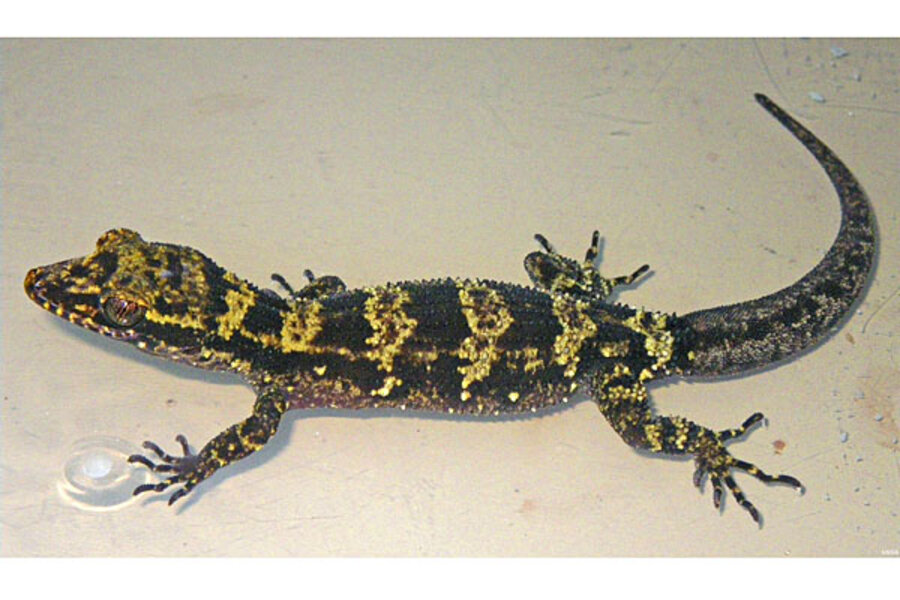Bumblebee gecko species a 'striking surprise,' say scientists
Loading...
A new species of gecko with black and gold bands like a bumblebee and slender toes termed a "striking surprise" has been discovered deep in the tropical forests of Papua New Guinea, the U.S. Geological survey said.
The lizard, which measures about 13 cm (5 inches) from head to tail and is covered with rows of skin nodules that make it easier for it to conceal itself on the forest floor, was collected on Manus Island in March, 2010 and described in a report published in the journal "Zootaxa" in April.
"We've officially named it Nactus kunan for its striking color pattern - kunan means 'bumblebee' in the local Nali Language," said Robert Fisher of the USGS Western Ecological Research Center, who with biologists from the Papua New Guinea National Museum discovered the gecko.
"It belongs to a genus of slender-toed geckos, which means these guys don't have the padded, wall-climbing toes like the common house gecko," he added in a statement.
Fisher found two on Manus Island in 2010 and analyzed their genetics to show that the lizards were new. Two other species also found on that trip are set for further analysis.
"This species was a striking surprise, as I've been working on the genus since the 1970s and would not have predicted this discovery," herpetologist George Zug of the Smithsonian Institution, co-author of the report on the new find, said.
(Editing by Jonathan Thatcher)







